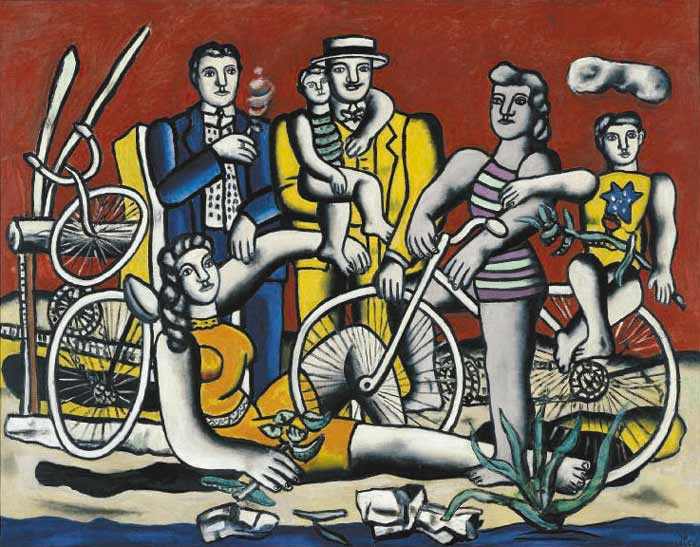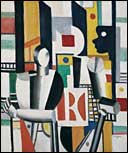This exhibition, the first presentation in Denmark of such a wide selection of Léger’s work, gathers more than ninety works lent by museums from all over the world: paintings, drawings, water colours, large-scale tapestries, examples of Léger’s films, book illustrations as well as theatre and ballet sets, covering the complete span of his period of activity, from 1905 to 1954. And his thoughts on art theory are available in the form of excerpts from his essays on the function of art in society. A unique opportunity to get acquainted with all of Léger’s production and understand his impact on contemporary art and his vision of man in the new age.
Man and machine
Intent on a radical break from his style of painting, in 1908 Fernand Léger (1881-1955) destroyed the bulk of his works. He found them too harmonious and too far from his vision of the modern. He wanted the dynamic, chaotic, contrastive city culture to pervade his work. Like his rival Picasso, he became one of the premier modernists in the first half of the twentieth century.
Captivated by Broadway’s neon ads of yellow, red and blue, Léger transfers them onto the canvas as coloured fragments. The noise of the new machines finds its way into his work as pulsating lines and angular shapes. He portrays man in the new conditions of the metropolis. His pictures of swimmers, acrobats, construction workers, cyclists in nature and families on picnics all illustrate his attraction to strength, movement and physical expression.
Léger’s social commitment
With a glowing faith in a better future and a fascination with both man and machine, Léger is an artist of his time, profoundly committed to building a better society. He feels morally bound to improve the general conditions of man through his art, which reflects that faith in the future, and thematises at the same time many of the conflicts confronting man in the modern culture – conflicts which have significantly transformed the existential conditions in the western world. It is interesting to note his impact on Danish art. In the 1920s Danish artists such as Asger Jorn and Franciska Clausen went to Paris to enrol at l’Académie Moderne with the French master. Léger’s influence is manifest in the early works of the two artists.
Illustration: Les hommes dans la ville, 1919
Publication
The exhibition catalogue is being produced in both Danish and English versions. Articles by Alain Bergala, Brigitte Hedel-Samson, Ina Conzen-Meairs and Charlotte Præstegaard Schwartz. Reprints of Léger's own texts as well as a biography. 27 x 21,5 cm. 63 colour reproductions. 96 pages. DKK 99.
Danish ISBN number: 87-7875-049-0 English ISBN number: 87-7875-050-4
| 








